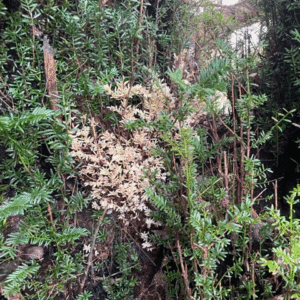The Golden Bough
The Golden Bough
The Defynnog Yew
My cousin came to stay and I wanted to show her around the area, so I took her to see a very special yew tree which is thought to be the oldest yew in Europe but also boasts a ‘golden bough’
The Defynnog Yew has a 20 foot girth and is as tall as it is wide. The tree has actually split in two but it is technically one tree. The golden bough grows on the second tree
An ancient yew tree can regenerate itself by producing new roots from its centre, enabling it to live on for thousands of years. The Defynnog Yew Tree is over 5,000 years old, having been carbon dated. So it was already well established when Stonehenge was being built and pre dates the church yard of St Cynog’s Church, where it stands today

It was probably planted where it is now to honour a great tribal leader or chief, and would have been the centre of large gatherings, known as ‘axis mundi’. It was regarded as sacred for its connection between heaven and earth. Therefore it is understandable that when Christianity arrived a church was built on the same site
The yew was most important to the Druids in their tree calendar and was associated with the Winter Solstice as it represented, death, resurrection, rebirth and immortality
The golden bough on a yew tree is very rare, almost like finding a pot of gold at the end of a rainbow but here on the Defynnog Yew there really is a golden bough, with a small area of tightly clustered golden leaves looking like a pot of gold
Nobody really knows what causes a golden bough, but a wealth of mythology is associated with it. The Druids worshipped it as a passage to the other world or the underworld. Much has been written about it and its significance such as the ‘White Goddess’ by Robert Graves. Its mythology is deeply embedded in our British cultural folklore and pysche
We had a wonderful visit to this magnificent, magical, mountainous tree. I paid my respects as others have done over many millenia, including our current King
Athene English
